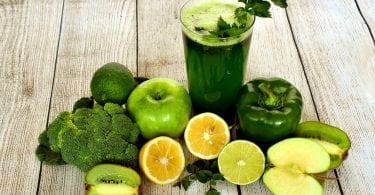We all like a drink with an ice and a slice be it soft or hardcore gin and tonic. But if faced with the inevitable question would you rather have lemon or lime with that, which way do you swing?
I have to admit there is more chance of just being given a lemon slice than actually having to choose between that or the lime, which I think makes me crave the lime more. “Mmh…lime? There’s a thought, yes, I’ll have that for a change.” Also being less commonly offered, the little snob inside of all of us – yes, ALL of US – rather likes the idea of the lime because it is less common. And we all want to be a little bit less common, don’t we?
So what do we know about these little citrus fruits? And why,if the lime has a peak season between May to October but the lemon only peaks May, June and August are the yellow lemons more popular than the green lime? Or are they?
Let’s start with the lemons
Eek so excited to share this very simple gluten and refined sugar free recipe. It’s also lemony. Best. #lemons pic.twitter.com/FJQfXToPaQ
— Saszali Sisters (@saszali_sisters) June 2, 2015
Now I’m not going to bore you with their history because you can all use Wikipedia, but suffice to say they are a native to Asia and grown in great quantities in China, Mexico and India. The tree produces yellow, oval fruit which has a rough cellulite look to its skin and a pronounced bulge on one end. I’m betting that’s won you over already. It is best to look for an unblemished firm, heavy one with no green tinge…this could mean it is under ripe. Also avoid a paler lemon which could signify it is older and contains less juice. (I’m saying nothing.)
#Lemons help stimulate digestion, increase circulation, and promote alkalinity! Find them in our #Immunity pic.twitter.com/M9SvE0Mkwm
— Project Juice (@ProjectJuice) June 5, 2015
But wait, it is used widely in industry, for culinary purposes, medicinal and cleaning- there seems to be no end to its talents. A few lemons, with electrodes attached, can as it happens, power a small digital watch. The acid in the juice dissolves tarnish; it deodorizes, removes grease, bleach stains and with a mix of baking soda can even remove those stains on your plastic storage boxes. In aromatherapy the lemon oil can be used to enhance ones mood. It even has its own hashtag – so it can now add social media to its popularity, which I feel has somewhat gone to its own bulgey-lemony-head. In a BBC Good Food page on lemons there was at the end of the article a rather skimpy paragraph entitled, ‘Alternatives’. It looks like this:
Alternatives:
Try limes.
Two words…as if there was nothing to say about them. I suspect this probably shows a slight tinge of envy. And speaking of green…
Let’s hear it for limes
Limes are green in colour, round and I’m sorry to say have less vitamin C than our friend the lemon. They are smaller and less sour. They too have a bit of a history regarding the British Navy no less. In the 19th Century limes were used to prevent scurvy – hence and you can have this for free – the British sailor acquired the nickname, ‘Limey’. You’re welcome.
They are versatile too with their acidity and floral aroma of zest being a popular ingredient in many culinary dishes. Indian, Mexican and Thai recipes call for the lime and they are also used in pickling in parts of South America. Dessert dishes do not go without either…Key Lime Pie anyone?
Love #limes. Will try some of these #recipes for sure: 28 Lime Recipes That Are Sublime http://t.co/i79PUfvFhn via @HuffPostCaLiv
— Holistic Soup (@holisticsoup) May 23, 2015
But don’t be fooled…it can be tricky little number…
How are you a lime when you don’t have any lime juice? #limes #lima https://t.co/7aiqqj3RGV
— Jom Folez (@Veruktaffe) June 1, 2015
And angry too. During research (What? You think this is thrown together??) I found out that if human skin is exposed to ultra violet light after being in contact with lime juice a reaction known as phytophotodermatitis can occur. This produces a swelling, blistering and darkening of the skin. Bartenders, when prepping cocktails can develop this due to the high concentration of furocoumarins (toxins) within the limes.
@houghhough Careful! I just read this: “Man gets second-degree burns squeezing #limes for a margarita” http://t.co/hx1ljqnrmS via @ajc
— kc commander (@KCcommander) June 4, 2015
Maybe this is why the lime is less popular with the bar tender? Don’t mess with the limes!
The lime too, not to be out done also serves the cleaning, aromatherapy and perfume industry well.
In conclusion it seems unfair to pit the two against each other. Lemons…limes…who cares? As long as there is some gin in the house…that is the important bit surely?









